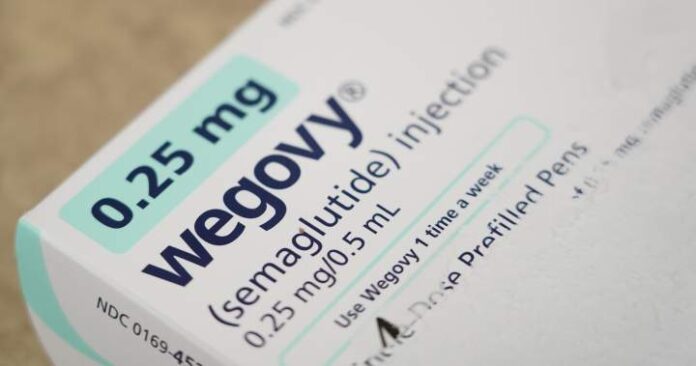Feeling a little squeezed in the orange juice aisle?
Between the climbing cost for a carton of fresh-squeezed juice, steep counter-tariffs on U.S. juices like Tropicana, and now plummeting U.S. shipments, you might worry this breakfast staple is in danger of becoming a luxury good.
But industry and business experts say none of this is unexpected and that consumers have options.
Canada is seeing a “dramatic reduction” in imports of orange juice from Florida but that is to be expected, given the rising prices and the fact that the beverage was specifically targeted by our counter-tariffs, said Michael von Massow, a professor of food agriculture and resource economics at the University of Guelph in Ontario.
In other words, the marked drop in imports has been compounded by the ongoing consumer desire to buy Canadian, he said.
“We are probably seeing an effect here where just the American product is going up in price — which means that it’s going down in demand — but there are other options on the shelf,” von Massow told CBC News.
“Unless you’re tied specifically to fresh-pressed orange juice from Florida.”
If you’ve stopped buying orange juice from Florida because the tariffs have sent prices soaring, there are many options to keep the breakfast staple on your table, says Michael von Massow of the University of Guelph.
U.S. shipments drop to 20-year low
The total value of U.S. shipments of fresh orange juice to Canada saw a steep drop in June to its lowest level in more than 20 years, according to data from both the U.S. Census Bureau and Statistics Canada.
The total import value in June of fresh orange juice from the U.S. into Canada was $5.78 million, compared to nearly $12 million in June 2024, according to Statistics Canada. Since January alone, the monthly import value dropped by 64 per cent.
There are a number of factors at play, said William Huggins, an assistant professor of finance and business economics at McMaster University in Hamilton.
Supply constraints push up prices, which reduces demand, he said. Plus, there are the 25 per cent counter-tariffs imposed by Canada on March 4.
Canada’s response to U.S. President Donald Trump’s tariffs affects $30 billion worth of U.S. goods, including orange juice.
“Canada specifically targeted Florida orange juice as a way of making a political point. We weren’t even shy about it,” Huggins said.
Orange juice is practically symbolic of the U.S., much in the same way that maple syrup is for Canada, he explained.
It’s also become emblematic of the consumer boycott, he added: when shoppers think of orange juice, they think of Florida, and when they think of Florida, they think of Trump and his Mar a Lago home.
“The most basic thing you can do to give your finger to the most powerful man in the world is to hurt his home state’s economy,” Huggins said.
Prices on the way up
Orange juice prices have always been volatile, as The Associated Press notes. Prices fall when bumper harvests create an oversupply of oranges and rise when frost or a hurricane knocks out fruit trees.
And recently, the price has been going up, according to Statistics Canada.
The monthly average retail price for a two-litre carton shot up in June to $5.95, from $5.62 in January, and is up 54 per cent compared to June 2020.
This year’s harvest in Brazil, the world’s largest exporter of orange juice, is likely to be the worst in 36 years due to flooding and drought, according to a forecast by Fundecitrus, a citrus growers’ organization in Sao Paulo state.
In the U.S., Florida’s already diminished orange production fell 62 per cent in the 2022-23 season after Hurricane Ian battered a crop that was already struggling due to an invasive pest. Drought also cut Spain’s orange production last year.
But what Statistics Canada doesn’t show is that the price increase here is largely driven by the price of Florida orange juice, von Massow reiterated.
At Loblaws, for example, a 2.63-litre container of U.S.-based Tropicana might cost up to $13.50 but the prepared-in-Canada PC brand currently costs $6.50. At Metro, 2.63 litres of Tropicana orange juice is $13.99, but 2.5 litres of Irresistible brand is $7.69.
Canadian-owned juice brand Oasis, which sources its oranges from Brazil and bottles the juice in Quebec, costs $5.49 for 1.5 litres at Food Basics.
But all these prices are significantly higher than what Canadians paid in 2017. According to Statistics Canada, a two-litre container of orange juice back then cost about $3.61— 40 per cent less than what it costs now.

Price increases turning off consumers
And consumers aren’t buying it.
Global orange juice demand dropped 15 per cent year-over-year between 2025 and 2024, according to a May report from Rabobank, a Dutch bank that focuses on food and agriculture. They cited high prices, weaker consumer sentiment and limited availability.
In a July report, Rabobank noted a “sharp decline in global orange juice supply.”
Some Canadian businesses have told CBC they’ve stopped serving orange juice as they rethink their relationship with U.S. products.
Huggins said he really doesn’t foresee orange juice becoming the next “liquid gold,” like olive oil, which recently saw its price double over three years.
Consumers have other options, he explained, and the boycott sentiment is still going strong.
“It’s not like there are no substitutes for orange juice. People will just drink apple juice,” Huggins said.
Carol Ann McDevitt, who owns the Roaring 20s Bed and Breakfast, about 40 kilometres west of Fredericton, is putting apple cider on the menu in place of imported U.S orange juice. And it’s not because of the cost.









